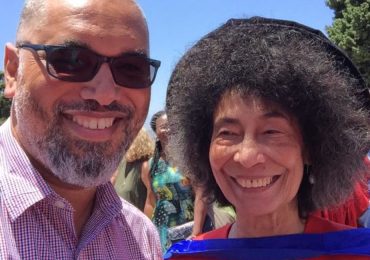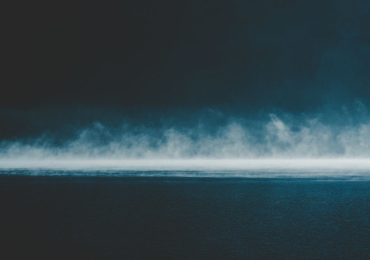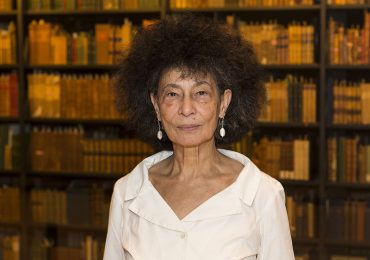An exhibition of JM Coetzee’s newly discovered childhood photography was recently held in Cape Town. Wamuwi Mbao was there.
With apologies to Gay Talese.
JM Coetzee, the sleeves of his crisp white shirt rolled to the elbows, looks tired. He is standing in the hallway of an old house in Cape Town’s Southern Suburbs. A shoal of admirers, many of them the same generation as he, most of them white, nose forward into the large room adjacent to the hall.
The occasion, the reason that Coetzee is standing in the Irma Stern Museum on a sweltering afternoon, is an exhibition of photographs taken by his younger self and only recently rediscovered. A set of negatives was unearthed while Coetzee was divesting himself of an apartment. Because Coetzee is an alluring, evasive, mysterious writer, and because his ties to South Africa diminish ever more with the passing years, these photographs have been made the subject of an urgent exhibit titled ‘Photographs from Boyhood’. The images in question are affixed to the walls in the upstairs gallery.
The musuem is a strange space. It is opulently arranged. It feels overbearing, like the home of a deceased aunt. Not my aunt, of course, for these are not my people. What is strange about the location of the exhibit, beyond its being a wealthy gallery that hides tucked away from the burdensome politics of the university campus that administers it, is that while it is true that Coetzee grew up in the Southern Suburbs, this in itself is not a compelling reason for holding an exhibition of his work there. The museum is a marker of irony: a genteel old house containing the work of an artist, Stern, whose representations of Blackness display the failure of empathy Coetzee has written so extensively about. What would such an exhibit look like if it was presented at the University of the Western Cape, an institution close in proximity but with a more politically engaged reputation? What would such an event be like if everyone wasn’t so utterly white? What does an event like this mean when there are others, like the Abantu Book Festival, that show us what a diverse South African reading public looks like?
My feeling as I wait among the guests is the state that always overtakes me when I see others enjoying what is most disquieting to me. The photos in this exhibition are not nostalgic. They are a testament to the young Coetzee’s seeking ways to escape a narrowly ordered world. But the exhibition is being received as an exercise in nostalgia: white nostalgia, which travels from generation to generation; older white people remember the period because they were there, younger ones recall their own mixed feelings around ‘maids’ and ‘garden boys’, and everyone enjoys remembering the first time they read Coetzee and felt that he was speaking to their world.
There is an atmosphere of rapturous anticipation. Any event where Coetzee is present is a strange and ritualistic happening, ripe with adulation and absurdity. There is the man himself: distant, and therefore confirming the greatness his followers are keen to invest him with. Then there are the hangers-on, simultaneously sceptical and intoxicated, enjoying themselves. A coterie of writers and novelists and lecturers who depend on him for their own material, and young men who are hoping the Master’s Gift will somehow rub off on them. I sit among them, listening to their private jokes, silently judging them. There are middle-aged men and women whose claim of belonging is that Coetzee lectured them in the seventies or eighties. There are pensioners who frown and say they knew his brother. There are actors and embattled university vice chancellors, exchange students and old men who swear that everything in Boyhood, Coetzee’s first work of enigmatic semi-biography, was in their childhood too. There’s the silver-haired woman who says that she used to babysit him when he was a boy, and does he remember her?
There are dozens more who can’t get in. The event is overbooked. The room holds fifty, but seventy have RSVPed. Others, imbued with that most Capetonian faith in the grace of others, are denied at the door. Some of them leave, some loiter in the lobby, or in the other parts of the museum, hoping for a glimpse of their idol. Those who were early take their places as close to the Master as modesty allows. Those who are in reach of Coetzee do not gesture for a handshake. They merely stand in respectful proximity, waiting for him to acknowledge them with a nod, or a few words. If they could sit at his feet, I suspect they would.
Others in the room wedge themselves into low armchairs, or onto paisley ottomans. The standing section at the back of the room is three-deep and everyone is craning their necks, or hoping for a podium. All they really want is to see The Master. It’s a spectacle in itself, the white and well-read of Cape Town coming to pay their dues. A woman asks her husband if he thinks she should ask Coetzee to sign her copy of Age of Iron. The husband frowns and shakes his head as if the idea is distasteful.
At a minute past three, Hermann Wittenberg, a tall, white-haired man who along with Farzanah Badsha has curated the exhibit, walks to the front of the room to introduce Coetzee. He is also introducing the exhibit, even though the pictures have been on display for two months now. Many of those present have been to the gallery once or twice in the past month, perusing the photos at their leisure. They are here for Coetzee himself. The fact of JM Coetzee is the central part of this exhibit. It is what the curation of the photos directs us to. It is what Wittenberg’s speech points us towards.
It is not, of course, what Coetzee himself would have us bear away. Coetzee does not deal in explanations. He reads sections from Boyhood, here and there replacing the names of characters who were fictionalised in the original because they were still alive. Everyone listens raptly. At one point, a phone rings a discordant digital melody. Coetzee does not pause his reading. He reads patiently, in relative synchronicity with a few of the photos from the exhibition. The lights are dimmed and we settle in to listen to a story as the images are projected onto the wall in front of us. Even though it is a story we have heard before, it is comforting. Each photo is made four-dimensional by these readings, so that they seem to be companions rather than belated bunkmates.
One picture in particular catches my attention. It is a series of images capturing two Black men who were employed as labourers on the Coetzee family farm. They have, it seems, joined the Coetzee family for a visit to the seaside. The caption tells us that the sequence captures Ros and Freek witnessing ‘their first ever sight of the sea’. What is powerful about the photos is how the two men, rendered starkly by the dynamic shortcomings of film designed for white skin, are turned towards one another. Their body language—cautious, guarded—tells us that they are sharing an experience whose circumstances are unimaginable to the white people around them. They appear almost superimposed on the bleached background. The photo itself is an eloquent testimony to what will be a returning theme in Coetzee’s writing. We see this even without the accompanying blurb, in which he wonders at the inner lives of these men; by inner lives, he means, of course, the lives that are lived away from the dominating gaze of their employers.
The reading ends as promptly as it began. The audience lets out a collective sigh before they applaud. There are no questions permitted, but there is the signing of books next door. Aiming to please, the organisers fret over whether to place Coetzee in the middle of the long table, like Jesus at the last supper, or at the end on a throne of a chair, like Scarface. The throne wins. Because I’m sprightlier than the other audience members, I find myself near the front of the queue. The woman from earlier is ahead of me. Coetzee is quietly affable at close quarters. He speaks with a soft voice that inclines one towards him, in both senses. He signs books with a swift hand. A neat, polite inscription.
How did Coetzee become a Maharishi for these people? Because the people who are gathered here believe completely in their own mythology. They are content to believe because there is very little to trouble their view of the world. They are here to uncover the comforting narrative of their redemptive history. For them, Coetzee’s work is the absolution of their culpability. Because he is a product of this part of Cape Town, they believe that there is no real distance between their own attitudes and those espoused in Coetzee’s work. Being here is simply further proof of the essential goodness of their Southern Suburbs existence. From here, they will go on to the next literary thing, a festival perhaps, or a book launch, where the faces are white and the earnestness is unquestioned.
That’s why everybody looks so happy to be here. Everybody gives everybody else looks that say ‘I belong.’ They all speak casually (but reverently) of ‘John’, dropping bon mots and choice observations drawn from the novels with savage knowingness. And they all remember when he wrote Disgrace and he made lots of people angry, but they didn’t mind all that because he is, to their minds, one of them. ‘May I take this moment to say on behalf of all of us, “welcome back!”’ says Wittenberg, and I wonder if I am part of that us. I wonder what community they are welcoming him back to, these people who believe that the exclusivity that attends to such a gathering is the result of nothing but the unfortunate run of circumstance, little to do with them.
There is a game going on here. Reading Coetzee is the confirmation that they are ethically sound people of good taste and sophisticated reading habits. It is beneath their noticing that of the one-hundred-strong crowd gathered here, the number of people who are not white can be counted on a single hand. What trails in Coetzee’s wake this afternoon is a collective fantasy of white ‘wokeness’. It’s atmospheric, but it’s there, and it thrives on vampirically co-opting Coetzee as a mascot.
Thus the ordering principle of the exhibit is familiar territory for them. There are intimations of the estranged gaze, of the vexing problem of otherness (vexing for Coetzee, not vexing for those gathered here today). Here, we see an image of the author’s mother. Here, a picture of the author’s father. With their accompanying captions, the pictures thus form a shorthand for who the author is, and what he has come to represent. The exhibition does what so much Coetzee scholarship does—it plays at finding Coetzee through his art. We are asked to believe that the young photographer is the Coetzee who appears to us through his writing. But this idea of the writerly Coetzee is itself a presupposition that, while it may be convenient for the three generations of white South Africans present in the room, is not my idea of Coetzee.
A parsing of ‘Photographs from Boyhood’ might be: ‘Proof that the author has always been consistently who we think he is.’ Coetzee’s interlocutors often seem like clumsy Clouseaus, guileless in their pursuit of clues from which meaning can be coerced. ‘Photographs from Boyhood’ is less a study of the young Coetzee’s embodied consciousness in the world than an attempt to tie the author to a continued narrowness of view, a cultural closeness that excludes as it exults.
Might there be another way of reading the images? I think that these photographs open up a different space of encounter with Coetzee. Thinking through these images might also mean understanding the complexity of Coetzee’s interior landscape not simply as a celebration, but as an indictment of those for whom such thinking remains only gesture, and not action.
- Wamuwi Mbao is an essayist, cultural critic and academic at Stellenbosch University. Follow him on Twitter.






Firstly let me say that I am an admirer of Wamuwi Mbao’s writing. However, I find quite a lot of the above a little too much of a stereotype of white South Africans. Although I have no doubt that many of these sentiments expressed above are true they are painted, much like Stern’s work, with the broad impasto that lacks nuance. I for one was there and find Coetzee’s presence and work both disquieting and complicated, as I do the community of whites that I am part of and that were present. But perhaps boarding on unfair is the failure to engage with the fact that Farzanah Badsha was the curator and that, in this review, she seems to have been written out of the equation. As Badsha, and indeed Coetzee in his reading, seemed to acknowledge, Ros and Freek and the farm are at the very centre of the exhibition. What is more, much of the rest of the exhibition is taken up with lower middle class South African existence, which cannot simply be said to be an entirely a white experience (although, no doubt, Coetzee’s variety, due to apartheid, was). I think it would be an interesting exercise to look at Coetzee’s early dabblings in the medium with the photography of Omar Badsha’s (Farzanah’s father). Omar Badsha is one of South Africa’s most interesting photographers and many of his themes, I think, relate to some of Coetzee’s.
Stunning piece